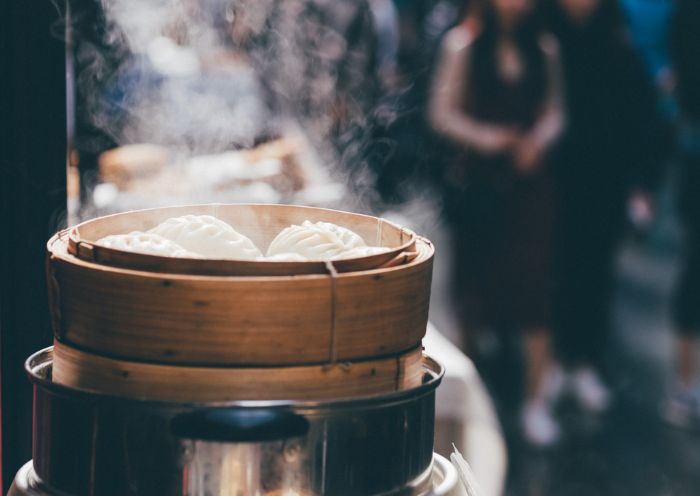There are several methods to prepare juicy and delectable cuisine without adding many unneeded ingredients. While most individuals are aware that they should avoid using the fryer while preparing healthy meals, many do not consider how their cooking method impacts the nutritional composition of their entrée.
The nutritional content of the meals you serve is affected by your cooking methods. Long heat exposure, for example, diminishes the total vitamin content of foods while increasing the availability of particular antioxidant phytochemicals.
Furthermore, cooking methods that necessitate the use of fats or oils tend to add a lot of calories to a meal. Here’s an overview of several cooking methods and how they affect the nutrient content of your food.
1. Microwaving
Microwave ovens are commonly used to reheat leftovers but may also be used to prepare vegetables. Because of the short cooking period, there is only a minor loss of nutrients, which is beneficial in designing a nutritional diet.
A microwave prepares food by heating it from within. It transmits radio waves that “excite” the molecules in food, causing heat to be generated and the meal to be cooked. The best part is you can microwave just about anything as long as the food is heated in a microwave-safe container.
While microwave cooking might cause food to dry out, this can be easily prevented by sprinkling a little water on your plate before heating or by laying a damp paper towel over your dish. In addition, the way microwaves cook food eliminates the need for additional oils.
2. Boiling
Boiling is a simple process that requires only water and a pinch of salt. However, high temperatures and lots of water can disintegrate and wash away up to 70% of water-soluble vitamins and minerals in some meals, particularly vegetables.
Nevertheless, vegetables, pasta, poultry, seafood, and whole eggs are frequently boiled. It is important to note that boiling influences nutritional content differently depending on how long the ingredients are cooked. Some veggies lose a significant portion of their vitamin C and B-complex vitamins. Still, specific carotenoids may become more available in some cases, at least in certain types of vegetables.
For example, according to a study, boiling carrots, zucchini, and broccoli may be the best method to maintain nutrients (compared to steaming, frying, or eating raw). Additionally, boiling increases the availability of certain antioxidants such as lycopene in tomatoes.
3. Steaming

Steaming everything from fresh vegetables to fish fillets allows them to cook in their own juices while retaining all of their natural flavours. But, of course, it’s always a good idea to start with some seasoning, whether it’s a sprinkling of salt or a squeeze of lemon juice.
The only disadvantage? Steaming may not always taste good. Since so many people do it incorrectly, it leads them to loathe veggies even more. In addition, steaming doesn’t provide a lot of taste, which might lead to individuals substituting the flavour with too much butter or salt.
4. Poaching
Poaching, boiling’s cousin, requires no additional ingredients. Poaching basically implies heating the meal in a tiny amount of hot water just below boiling temperature. It takes somewhat longer (which some experts say it reduces nutrient retention), but it is an excellent technique to gently prepare delicate items, such as fish, eggs, or fruit.
If you’re poaching meat, keep in mind that you can’t determine if it’s safe to consume by looking at it only. Hence, you need to make use of a meat thermometer. Also, remember that if you poach in something other than water, like milk or oil, you may add calories to your meal.
5. Broiling
Broiling involves heating food for a brief amount of time over high, direct heat. For example, broiling is an excellent method for cooking delicate pieces of meat. Still, it is not recommended to cook vegetables since they might dry out quickly. In addition, the higher the temperature, the more the enzymes are degraded, resulting in increased nutritional losses.
However, broiling might result in acrylamide formation, and you may also char the meal. Therefore, you can try marinating meat in vinegar, lemon, or herbs like thyme and rosemary before broiling as a barrier against HCAs.
6. Grilling

Grilling is an excellent cooking method for obtaining optimum nutrients without losing flavour. It uses very little fat and adds a smoky taste while keeping meats and vegetables moist and tender. While these are certainly health benefits, grilling is not without its drawbacks. According to several studies, eating charred, well-done meat on a frequent basis may raise the risk of pancreatic and breast cancer.
Cooking at high temperatures can also cause a chemical interaction between the fat and protein in meat. This can result in toxins associated with antioxidant imbalances in the body and inflammation, raising the risk of diabetes and cardiovascular disease. However, grilling once in a while is unlikely to have a significant influence on your health.
7. Stir-frying
While this approach includes oil in the pan, it should be used sparingly — just enough to produce a good sear on your meat and veggies. It works well with bite-sized bits of meat, grains like rice and quinoa, and thin-cut vegetables such as bell peppers, julienned carrots, and snow peas.
Additionally, according to some research, cooking vegetables with a small amount of olive oil may boost the antioxidant potential of the meal. This may come as no surprise, given that olive oil is an essential component of the heart-healthy Mediterranean diet.
8. Air-frying
An air fryer is a piece of standard kitchen equipment for frying things, including meat, pastries, and potato chips. It produces a crunchy, crispy exterior by circulating hot air over the meal while preserving certain nutrients during the cooking process. These include vitamin C and numerous protective plant compounds called polyphenols.
Air-fried meals are promoted as a healthier alternative to deep-fried dishes due to their decreased fat and calorie content. Instead of immersing the ingredient in oil, the Philips air fryer uses only a tablespoon (15 mL) of oil to create the same taste and texture as deep-fried dishes.
The cooking methods you choose impact not just the texture and flavour of your foods but also their nutritional worth. Hence, select approaches that result in the least nutritional loss. Of course, no cooking method is ideal, so eat plenty of fresh fruits and vegetables daily as part of a healthy balanced diet.
